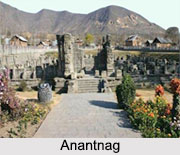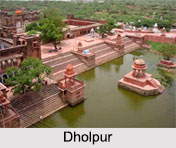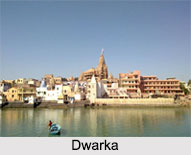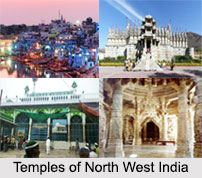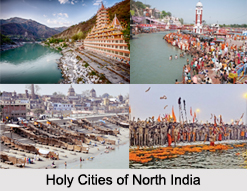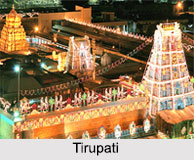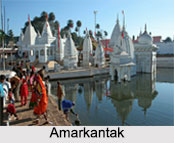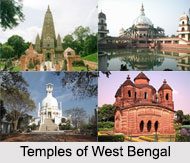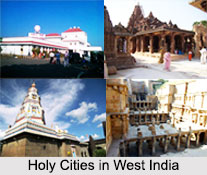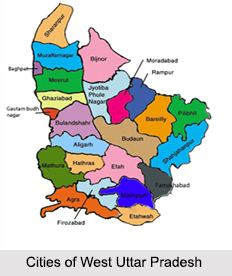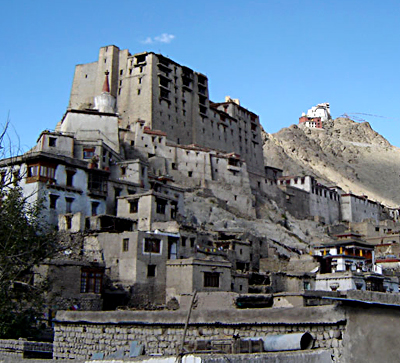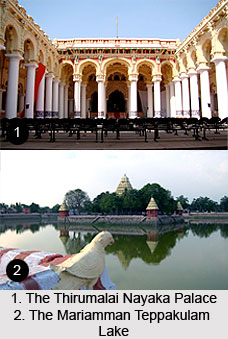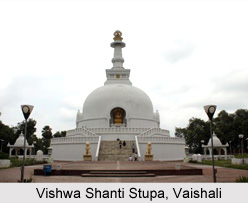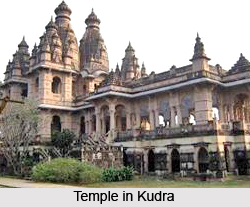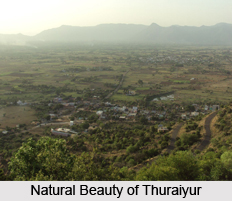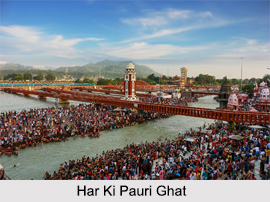Introduction
 Udaipur is beautiful city remained untouched by the Mughal influences in arts and architecture. This medieval city has many palaces, lakes and temples. The "City of Lakes" has developed into a major tourist attraction because of its amazing local attractions.
Udaipur is beautiful city remained untouched by the Mughal influences in arts and architecture. This medieval city has many palaces, lakes and temples. The "City of Lakes" has developed into a major tourist attraction because of its amazing local attractions.
History of Udaipur
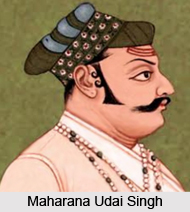 Udaipur was ruled by the Mewar dynasty. They had once ruled over Chittorgarh before Akbar threw them out. This dynasty was always known in Rajasthan for their heroism, chivalry and patriotism. Once upon a time Udaipur was the capital of Mewar. The founder of this beautiful district was Rana Udai Singh. Inspite of being compelled to leave Chittorgarh, their original home; the Rajputs did not give up trying. Thus they established a new and alternative capital at Udaipur. It is said that once when Maharana Udai Singh was out hunting he stumbled upon a sage seated at the banks of the Pichola Lake.
Udaipur was ruled by the Mewar dynasty. They had once ruled over Chittorgarh before Akbar threw them out. This dynasty was always known in Rajasthan for their heroism, chivalry and patriotism. Once upon a time Udaipur was the capital of Mewar. The founder of this beautiful district was Rana Udai Singh. Inspite of being compelled to leave Chittorgarh, their original home; the Rajputs did not give up trying. Thus they established a new and alternative capital at Udaipur. It is said that once when Maharana Udai Singh was out hunting he stumbled upon a sage seated at the banks of the Pichola Lake.
This hermit predicted that the fortunes of the king would take turn for good and he would build a palace in that same place. To commemorate this event the king built a small shrine in the name of Dhuni Mata. It was after this incident that Udai Singh decided to build his new capital in that place. Hence the city of Udaipur came into existence. An artificial lake was built here by the maharana. It was named after him, Udai Sagar. Later he also discovered a pond that had been built by a `banjara` or gypsy. The maharana worked further on this pond and created the man made Pichola Lake. Originally a small palace known as, Nochouki, was established in 1559.
With time the marble structure grew in size and today it is one of the largest palaces in India. Amazingly Udaipur remained untouched by the Mughals. The Sisodiyas intelligently kept themselves at bay from the Mughals. As a result Udaipur is one of those places in Rajasthan that is devoid of any Mughal influence. The Sisodiyas were staunch supporters of their own culture and hence no foreigner could dominate the art and culture of Udaipur. This one clan had kept on holding to the roots of Hinduism in an age when everything was getting influenced by the Mughals.
Their fierceness and sense of independence earned them a lot of respect and an immortal place in the Rajasthani history. The list of Sisodiya rulers that ruled Udaipur is quite long. There are several instances engraved in the pages of history of Udaipur that goes onto prove the dedication that these rulers had for their tradition and culture. Maharana Pratap Singh once refused lunch with Man Singh because the latter had married off his sister to Jahangir. Unable to digest this insult Man Singh declared war on Pratap Singh and defeated him in the battle of Haldighati.
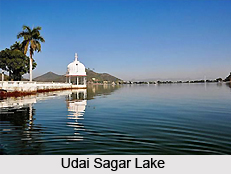 The title of Maharana means great warrior. The Maharana of Udaipur is considered the head of 36 Rajput clans. The descendants of Mewar hail themselves as the descendent of Sun, Suryavanshi. After Udai Singh it was Maharana Pratap Singh who was a fantastic monarch. Fearless and fierce he commanded a lot of respect from his peers. A statue had been built in Udaipur in the memory of the ruler. The statue depicts the Maharana riding his favorite horse Chetak. According to legends Chetak saved the life of his master in the battle of Haldighati in lieu of his own life. Inspite of the rivalry between him and the Mughals he had earned a lot of respect from the Mughal emperor Akbar. On hearing the death news of his bravest challenger he asked the royal poet to compose a verse in Maharana Pratap Singh`s memory.
The title of Maharana means great warrior. The Maharana of Udaipur is considered the head of 36 Rajput clans. The descendants of Mewar hail themselves as the descendent of Sun, Suryavanshi. After Udai Singh it was Maharana Pratap Singh who was a fantastic monarch. Fearless and fierce he commanded a lot of respect from his peers. A statue had been built in Udaipur in the memory of the ruler. The statue depicts the Maharana riding his favorite horse Chetak. According to legends Chetak saved the life of his master in the battle of Haldighati in lieu of his own life. Inspite of the rivalry between him and the Mughals he had earned a lot of respect from the Mughal emperor Akbar. On hearing the death news of his bravest challenger he asked the royal poet to compose a verse in Maharana Pratap Singh`s memory.
The later Sisodiya kings were:-
• Rana Amar Singh I
• Rana Karan Singh
• Rana Jagat Singh I
• Rana Raj Singh I
• Maharana Jai Singh
• Rana Amar Singh II
• Maharana Sangram Singh II
• Rana Jagat Singh II
• Rana Pratap Singh II
• Rana Raj Singh II
• Rana Ari Singh II
• Rana Hamir Singh II
• Rana Bhim Singh
• Maharana Jawan Singh
• Maharana Swaroop Singh
• Maharana Shambhu Singh
• Rana Sajjan Singh
• Maharana Fateh Singh
• Maharana Bhopal Singh
• Maharana Bhagwat Singh
• Maharana Arvind Singh
Geography of Udaipur
Udaipur is located in Udaipur District of southern part of Rajasthan. Aravalli Mountain Ranges surrounds Udaipur and forms an amazing beauty, which generally allure the tourists.
Udaipur is located at 24.58 degree north to 73.68 degree east. The average elevation of Udaipur is about 598 meters. This city is geographically positioned in the southern region of Rajasthan, near the Gujarat border. It is 403 kilometers from the capital city Jaipur.
Climate of Udaipur
Udaipur enjoys the tropical and sub-tropical desert climate with the maximum temperature of 42.3 degree Celsius and a minimum of 30 degree Celsius during summer and during winter maximum is 28 degree Celsius and minimum is 2.5 degree Celsius. The annual rainfall is about 61cm.
Demography of Udaipur
According to the Population Census in the year 2011, Udaipur had the total population of 608,426. The average literacy rate of Udaipur is 90.43 percent. The male literacy rate was 95.41 percent while the female literacy rate was 85.08 percent.
Economy of Udaipur
 Udaipur is dependent on small scale industries. Zinc, Chemical, Gemstones and Jewellery are the major stake holder of its economy. Here the paintings, silver jewellery works and terracotta art are also the popular industries. But the principal industry here is the tourism.
Udaipur is dependent on small scale industries. Zinc, Chemical, Gemstones and Jewellery are the major stake holder of its economy. Here the paintings, silver jewellery works and terracotta art are also the popular industries. But the principal industry here is the tourism.
Culture of Udaipur
Udaipur is culturally nourished with mural paintings of Rajasthan School of Paintings, Ghoomar dance, Kalbelia Dance, Bhavai dance, Kachchhi Ghodi dance and the miniature paintings. Bharatiya Lok Kala Kendra is prominent cultural association here which is fostering the traditional artworks among the people of Udaipur.
Tourism In Udaipur
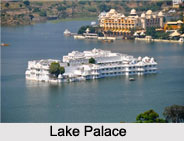 Tourism in Udaipur includes major attractions surrounded by Aravalli Mountain Ranges. This medieval city of Rajasthan has tourism attractions like Lake Palace, Udaipur City Palace, Jag Mandir, Monsoon Palace, Ahar Museum, Jagdish Temple, Deen Dayal Upadhyay Park, Fateh Sagar Lake, Pichola Lake, Saheliyo-ki-Bari, Sajjan Niwas Garden (Gulab Bagh Zoo), Sukhadia Circle, Bharatiya Lok Kala Mandal, Shilpgram, Udai Sagar Lake, Doodh Talai Lake, Jaisamand Lake and many others.
Tourism in Udaipur includes major attractions surrounded by Aravalli Mountain Ranges. This medieval city of Rajasthan has tourism attractions like Lake Palace, Udaipur City Palace, Jag Mandir, Monsoon Palace, Ahar Museum, Jagdish Temple, Deen Dayal Upadhyay Park, Fateh Sagar Lake, Pichola Lake, Saheliyo-ki-Bari, Sajjan Niwas Garden (Gulab Bagh Zoo), Sukhadia Circle, Bharatiya Lok Kala Mandal, Shilpgram, Udai Sagar Lake, Doodh Talai Lake, Jaisamand Lake and many others.
Lake Palace of Udaipur
Lake Palace of Udaipur overlooks Pichola Lake, now converted into a heritage hotel. It has a wonderful collection of courtyards, pavilions, hanging gardens and a lot more. Lake Palace was built in between 1743 to 1746. It was specially the winter palace for the royal families of Mewar.
City Palace of Udaipur
City Palace of Udaipur is a beautiful monument built of marble in flamboyant style of Rajput architecture. A number of architectural and artistic wonders are present in the City Palace of Udaipur.
Ahar
Ahar has several cenotaphs which commemorate the Royal Status of Mewar. The cenotaph of Maharana Amar Singh attracts the tourists for its architecture.
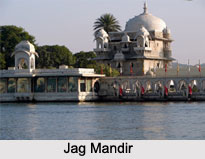 Ahar Archaeological Museum
Ahar Archaeological Museum
Ahar Archaeological Museum is an archaeological museum of antiques of ancient historical rulers and the medieval Hindu kings.
Jagdish Temple
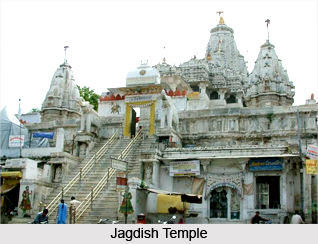 Within the City Palace complex the tourists will come across Jagdish Temple. Made in Indo-Aryan style it dates back to 1651. It was built by Maharana Jagat Singh whose reign in Udaipur extended from 1628-53. Jagdish Temple in Udaipur is dedicated to Lord Vishnu. In Hindu mythology he is considered the preserver of the universe. This holy shrine is the largest temple in Udaipur. Swarm of devotees throng the temple to take a look at the lord. Jagdish Temple flaunts three stories and is entirely carved out of stone. The massive gateway to the temple is visible even from a distance of 150 meters from the Bara Pol of the City Palace.
Within the City Palace complex the tourists will come across Jagdish Temple. Made in Indo-Aryan style it dates back to 1651. It was built by Maharana Jagat Singh whose reign in Udaipur extended from 1628-53. Jagdish Temple in Udaipur is dedicated to Lord Vishnu. In Hindu mythology he is considered the preserver of the universe. This holy shrine is the largest temple in Udaipur. Swarm of devotees throng the temple to take a look at the lord. Jagdish Temple flaunts three stories and is entirely carved out of stone. The massive gateway to the temple is visible even from a distance of 150 meters from the Bara Pol of the City Palace.
Standing on several pillars the main hall is beautifully decorated with carved figures in stone. The walls are painted and the ceilings are decorated. Apart from the religious important it is an exquisite piece of art. The steeple of the temple is almost 79 feet high. Such massive structures are not very common in Udaipur. The shikhar or steeple is further decorated with sculptures of dancers, musicians, horse riders and elephants. Whether a person is an art lover or not he or she will be completely dumbfounded by its splendor.
Two life size elephant statues had been placed at the main entrance to welcome the devotees. An inscription referring to Maharaja Jagat Singh is also to be found here. A flight of 32 stairs will lead the visitors to the main idol. A stone effigy of Garuda (half man and half eagle) is also to be found at the temple premises. It is placed in such a way that the mythological character acts as the protector of Lord Jagdish or Vishnu.
The main idol of the lord is carved out of a single black stone. With four arms and composed face the figure of the god is quite striking. There are smaller shrines within Jagdish Temple. These arts are dedicated to Lord Shiva, Sun God, Goddess Shakti and Lord Ganesha. This is probably very few of those holy shrines that had been built keeping in mind the science of `Vastushstra`. The architectural grandeur as well as the religion make Jagdish Temple in Udaipur famous amongst the tourists.
Fateh Sagar Lake
Fateh Sagar Lake is an artificial lake surrounded by Aravalli Mountain Range. This lake is named after Maharana Fateh Singh. Udaipur Observatory is located on the middle of this lake.
Pichola Lake
Pichola Lake is an artificial freshwater lake in Udaipur, created in 1362 AD, by the people of Rajasthan.
Jag Mandir
Jag Mandir is a palace built on Pichola Lake. This place was used as the summer resort for the kings of Mewar and Prince Khurram (later known as Mughal Emperor Shah Jahan).
Saheliyo-ki-Bari
Saheliyon-ki-Bari now acts as an eco tourism spot in Udaipur. This garden is located in northern part of Udaipur.
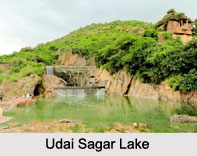 Gulab Bagh
Gulab Bagh
This is considered as the largest zoo and the garden in Udaipur. Built by Maharana Sajjan Singh, Gulab Bagh includes Saraswati Library, Navlakha Mahal, Kamal Talai and Miraj Jyotish Upavan.
Bagore ki Haveli
It is a place of over one hundred rooms now converted into a museum. It was built by Amir Chandra Badwa, the Prime Minister of Mewar in 18th Century.
Udaipur Solar Observatory
This heritage building is located on Fateh Sagar Lake. It was built in 1976 by Dr. Arvind Bhatnagar.
Udai Sagar Lake
It is also a man made lake built by Maharana Udai Singh in 1565.
Haldighati
Haldighati is a mountain pass in Aravalli Range, popular for the battle of Haldighati, which was fought by Kingdom of Mewar against the Mughals.
Doodh Talai Lake
Doodh Talai Lake is a small lake located adjacent to Pichola Lake. Near this lake is located Shiva Niwas Palace which was the residence of Maharana Fateh Singh.
Places of Interest in Udaipur
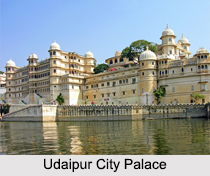 Places of Interest in Udaipur comprise of palaces, lakes and gardens. Udaipur was established as the capital of the Rajputs by Maharana Udai Singh in medieval era. For tourists it will be an enjoyable experience to witness these charming monuments of Udaipur. Essentially Rajput in style the places of interest in Udaipur are historically significant too. The Sisodiya Kings were known for their attachment to their roots and the palaces were built accordingly. Temples and gardens were an inevitable part of these historical palatial buildings.
Places of Interest in Udaipur comprise of palaces, lakes and gardens. Udaipur was established as the capital of the Rajputs by Maharana Udai Singh in medieval era. For tourists it will be an enjoyable experience to witness these charming monuments of Udaipur. Essentially Rajput in style the places of interest in Udaipur are historically significant too. The Sisodiya Kings were known for their attachment to their roots and the palaces were built accordingly. Temples and gardens were an inevitable part of these historical palatial buildings.
Palaces in Udaipur
Palaces in Udaipur comprised of Udaipur City Palace, Sheesh Mahal, Moti Mahal, Bagore Ki Haveli, Bada Mahal and many others. The most remarkable palaces in Udaipur are the City Palace and the Lake Palace. City Palace of Udaipur is an oldest monument. This palace is surmounted by the Rajput architectures of ancient era. It was constructed by Maharana Udai Singh II. Now it is a museum. It attracts thousands of tourists throughout the year. Sheesh Mahal is a palace of exquisite beauty. The entire "Mahal" has been created with pieces of glass. Such innovative thinking and style will completely astonish the tourists. Moti Mahal is a palace of exquisite architecture. This palace is real example of Rajasthani architecture and here one can also find the cultural amalgamation of Rajasthan.
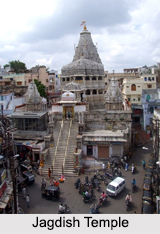 Museums in Udaipur
Museums in Udaipur
There are many museums in Udaipur. Some of the popular museums in Udaipur are Maharana Pratap Museum, City Palace Government Museum, Crystal Gallery, Shilpgram Museum, Bharatiya Lok Kala Mandal, Vintage Collection of Classic Cars Museum, Udaipur Solar Observatory, Udaipur Art Villa, B. G. Sharma Art Gallery, Ahar Museum and Padmawati Arts and Handicrafts. These museums depict the royal and luxurious life of Rajputs from the Hindu era to the Independence of India in 1947.
Temples in Udaipur
Some of the prominent temples in Udaipur are Eklingji Temple, Srinathji Temple, Sas-Bahu Temple, Nimach Mata Temple and Jagdish temple These temples show the elegance in traditional Hindu art and Hindu architecture and the aura of Rajput sculptures that was reached at its height in Mughal era.
Lakes in Udaipur
Most of the water bodies in Udaipur are made artificially for the permanent water resources to the villages of Rajasthan. These lakes were built under the commission of Maharanas of Udaipur. Some of the lakes in Udaipur are Pichola Lake, Fateh Sagar Lake, Jaisamand Lake, Dhebar Lake, Udai Sagar Lake and Goverdhan Sagar Lake.
Gardens in Udaipur
Gardens in Udaipur are the major tourist attractions. These include Saheliyon Ki Bari and Sajjan Niwas or Gulab Bagh. These gardens with the water bodies are established as the retreat for the royal ladies of Udaipur. Now, these are the popular tourism attractions with the eco tourism spots.
Architecture Of Udaipur
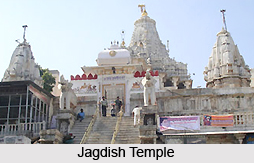 Udaipur in Rajasthan is a reservoir of several architectural creations. The most striking specimens are the huge forts which are noteworthy for their structural design; the remarkable temples which generate a sense of aestheticism with their spiritual bliss, the lush gardens, majestic palaces of the Rajput era and museums. Udaipur is also referred to as the `City of Lakes` and is renowned for the fascinating Lakes. The elevated hills and the beautiful lakes make a flawless picturesque background to the Udaipur city. Set amidst the Aravalli ranges of Rajasthan, Udaipur is regarded as the `Venice of the East` and its architecture has added to the exquisiteness and splendour to the place.
Udaipur in Rajasthan is a reservoir of several architectural creations. The most striking specimens are the huge forts which are noteworthy for their structural design; the remarkable temples which generate a sense of aestheticism with their spiritual bliss, the lush gardens, majestic palaces of the Rajput era and museums. Udaipur is also referred to as the `City of Lakes` and is renowned for the fascinating Lakes. The elevated hills and the beautiful lakes make a flawless picturesque background to the Udaipur city. Set amidst the Aravalli ranges of Rajasthan, Udaipur is regarded as the `Venice of the East` and its architecture has added to the exquisiteness and splendour to the place.
Udaipur is the historic capital of the former kingdom of Mewar in the Rajputana agency. It remained untouched by the Mughal invasion. Maharana Udai Singh was the founder of Udaipur. In the year 1818, Udaipur became the princely state of British India. Most of the architecture of Udaipur is based on the Rajput style of architecture. At present Udaipur is a tourist favourite for its outstanding forts and palaces. The lakes of Udaipur provide water to the city, as well as defend the city. Since a water body creates the "floating on water" image, the city came to be called "water city".
The palaces built by the Rajputs are the main architectural attraction of Udaipur. The Lake Palace for example covers an entire island in the Pichola Lake. It is one of the most elegant palaces of the world. The courtyards of the palace are lined with columns, pillared terraces, fountains and gardens which enhance its impressive image. The rooms are ornamented with cusped arches, inland stones of pink and green lotus leaves and painted mirrors. Apartments like the Bada Mahal, Phool Mahal, Kush Mahal, Ajjan Niwas, and Dhola Mahal boost the romance of the elegant setting. The Lake Palace has now been converted into a five star luxury hotel. The City Palace is the symbol of Udaipur.
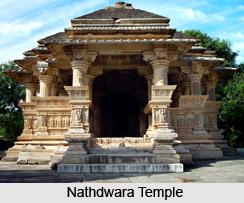 It was originally built in the 16th century by Udai Singh, but additions were made later and embellishments in this palace reflect the culture of the Rajputs. Through the three arched gate is a huge court¬yard, within which the palace stands five-storeys high. Irregular in plan, the palace has many courtyards and rooms that have beautiful designs etched on them. There are numerous other palaces such as Dilkhush Mahal, Moti Mahal, Sheesh Mahal, and Krishna Vilas.
It was originally built in the 16th century by Udai Singh, but additions were made later and embellishments in this palace reflect the culture of the Rajputs. Through the three arched gate is a huge court¬yard, within which the palace stands five-storeys high. Irregular in plan, the palace has many courtyards and rooms that have beautiful designs etched on them. There are numerous other palaces such as Dilkhush Mahal, Moti Mahal, Sheesh Mahal, and Krishna Vilas.
The temples in and around Udaipur are celebrated for their outstanding architecture and religious nature. Many of these temples are recognised as the holy pilgrimages of the Hindus. In Udaipur, Jagdish Temple is the well-known temple which is dedicated to Lord Vishnu. It is built in the Nagara style of architecture. Among the other temples is the Rishabhdeo Temple which is a chief pilgrimage site for followers of Jain religion. The Ambika Mata Temple, also known as the Jagat temple is a small shrine made in fissure of a rock. The Nathdwara temple, the Kankroli temple and the Eklingji temple are among the numerous temples of Udaipur that are famous for their excellent architecture.
The gardens of Udaipur are also famous for their architectural wonder for example the Gulab bagh and the Sajjan Niwas garden. Saheliyo ki Bari was constructed with a different concept and was meant for the pleasure of royal ladies. There is a large Royal Tomb Garden in Ahar, outside Udaipur. Designed in the usual style, the Chhatris of various sizes are intercepted with streams and ponds which make them beautifully different.
Udaipur is a storehouse for some of the unique architectural creations. The Lakes, Palaces and the temples makes Udaipur one of the most captivating places on the map of India.
Monuments Of Udaipur
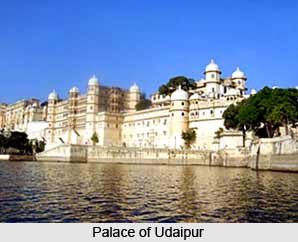 Monuments of Udaipur are renowned for their architectural splendour. Situated about 161 miles from Jodhpur at a height of 1893 feet above sea-level, Udaipur is one of the most romantic and evocative cities in India. Also known as the `city of Sunrise`, Udaipur is the residence of the highest of the Rajput rulers, the Sooryavansham clan of Rajputs. It was founded by Maharana Udai Singh after the third and final sack of Chittorgarh in 1567.It was the fourth and final capital of the state of Mewar. Located in a fertile valley between the Kumbhalgarh fort and Chittorgarh fort, the city is planned around three lakes: the Pichola Lake, Fateh Sagar in Udaipur and the Umaid Sagar. The monuments of Udaipur are majestic and splendid, and the city is surrounded by incandescent blue lakes with fairy-tale palaces of outstanding beauty.
Monuments of Udaipur are renowned for their architectural splendour. Situated about 161 miles from Jodhpur at a height of 1893 feet above sea-level, Udaipur is one of the most romantic and evocative cities in India. Also known as the `city of Sunrise`, Udaipur is the residence of the highest of the Rajput rulers, the Sooryavansham clan of Rajputs. It was founded by Maharana Udai Singh after the third and final sack of Chittorgarh in 1567.It was the fourth and final capital of the state of Mewar. Located in a fertile valley between the Kumbhalgarh fort and Chittorgarh fort, the city is planned around three lakes: the Pichola Lake, Fateh Sagar in Udaipur and the Umaid Sagar. The monuments of Udaipur are majestic and splendid, and the city is surrounded by incandescent blue lakes with fairy-tale palaces of outstanding beauty.
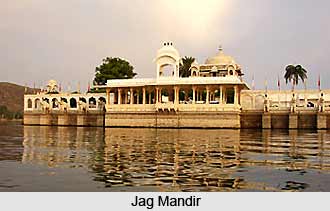 The city is built on undulating land, surrounded by 17th-century fortifications strengthened by huge bastions. There are five main gates to the city: the Hathi Pol or Elephant Gate to the north, Kishan Gate to the south, Delhi Gate to the north-east, Chand Pol or Moon Gate to the west and Suraj Pol or Sun Gate to the east. The streets and alleyways of the old city are charming and picturesque, studded with shrines to Hanuman, Kali and other deities.
The city is built on undulating land, surrounded by 17th-century fortifications strengthened by huge bastions. There are five main gates to the city: the Hathi Pol or Elephant Gate to the north, Kishan Gate to the south, Delhi Gate to the north-east, Chand Pol or Moon Gate to the west and Suraj Pol or Sun Gate to the east. The streets and alleyways of the old city are charming and picturesque, studded with shrines to Hanuman, Kali and other deities.
There are a number, of palaces dotting the entire landscape of the beautiful city of Udaipur. They rank among the chief historical monuments found here.
One of the major attractions of Udaipur is the City Palace of the Maharanas. It stands astride a low ridge along the shores of the Pichola Lake, an impressive complex of buildings in granite and marble flanked by octagonal corner towers surmounted by cupolas. A blend of Rajput and Mughal styles, the City Palace is a colossal series of buildings which, beyond the edge of the natural bedrock, are carried on huge stone arches and are a continuation of the city walls. The whole exterior is faced in white plaster. The entrance is via the Hari Pol or Great Gate (1600), which contains the royal drums, and on to the Tripolia Gate (1725). Between the two are eight carved Toranas, arches under which the rulers were weighed against gold and silver, which was then distributed to the poor. In the court beyond Tripolia elephant fights were staged. The Ganesh Deori Gate leads to the Rai Angan or royal courtyard (1571), on the east side of which is the Jewel Room. The central pavilion, the Choti Chitra Shali, is enriched with brilliant blue mosaics. The Jagdish Temple (1640) is an imposing building about 400 m from the City Palace.
 Two of the most beautiful palaces found among the monuments of Udaipur are the island palaces -Lake Palace and Jag Mandir- located along the banks of the Pichola Lake. Lake Pichola was formed in the 14th century. Fringed with green hills and studded with ghats and gardens, the lake provides a transcendental beauty to Udaipur.
Two of the most beautiful palaces found among the monuments of Udaipur are the island palaces -Lake Palace and Jag Mandir- located along the banks of the Pichola Lake. Lake Pichola was formed in the 14th century. Fringed with green hills and studded with ghats and gardens, the lake provides a transcendental beauty to Udaipur.
The Lake Palace Hotel (mostly 1754 AD, with recent additions) is simply one of the most beautiful hotel-palaces in the world, like a serene ocean linet perpetually moored in the centre of the lake. The hotel is really a complex of palaces, built from the mid-17th century onwards, interspersed with courts, fountains, trees and gardens. Once the summer residence of the Ranas of Mewar, the former royal banquet rooms are now used as reception suites and bars.
The Jag Mandir, on the southern island, was built in 1551. The domed pavilion or Gul Mahal, which is its greatest landmark, was commenced by Karan Singh (1621-8). It is one of the few examples of Mughal-style architecture in the state. In 1623 Prince Khurram, the future Emperor Shah Jahan, lived here when in revolt against his father, Jahangir, and it is maintained that the pietra dura work on the interior later inspired the detailing of the Taj Mahal. European refugees fleeing the Mutiny were given sanctuary in this palace in 1857. Most of the buildings are of 18th-century origin. Sometimes it is called Jagannath, the Lord of the World, after the temple within the walls of this water-garden palace.
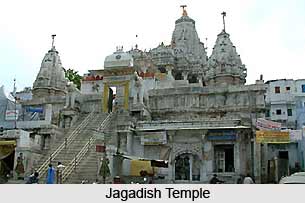 A number of the smaller islands contain pavilions and small palaces. The Mohan Mandir, in the north-cast corner of the lake, was built by Jagat Singh between 1628 and 1652. The road along the east side of the lake leads to Khas Odi, built by Sir Sajjan Singh between 1874 and 1884 as a shooting-box. The lake palaces and Khas Odi are visited by boat.
A number of the smaller islands contain pavilions and small palaces. The Mohan Mandir, in the north-cast corner of the lake, was built by Jagat Singh between 1628 and 1652. The road along the east side of the lake leads to Khas Odi, built by Sir Sajjan Singh between 1874 and 1884 as a shooting-box. The lake palaces and Khas Odi are visited by boat.
The Bagore ki Haveli is a very old congenial building located at the waterfront of Lake Pichola at Gangori Ghat. It was built in the 18th century by Amin Chand Badwa. The Haveli has over one hundred rooms, with delicate glass and mirror work in the interiors. There is a fine display of costumes and modern art found here, with some fine exhibits of Mewar painting on the walls of the Queen`s Chamber. The building became the property of the State of Mewar after the death of Badwa. It went on to be occupied by Maharana Shakti Singh of Bagore, and it acquired the name of Bagore ki Haveli, house of Bagore. It was the Maharana who built the palace of the three arches here in 1878. The Haveli now holds entertainment programs of traditional song and dance for tourists and visitors.
A number of other beautiful palaces are found strewn all over Udaipur. These exotic palaces are very beautifully decorated, each of them adorned with some unique artistry.
The Sheesh Mahal has inlaid mirrors; the Krishna Vilas, painted miniatures, installed by Raja Bhim Singh in 1805, after his daughter Krishna Kumari chose suicide rather than marriage to a rival prince. The Manak Mahal or Ruby Palace has glass and porcelain; the Moti Mahal or Pearl Palace, mirrors, the Chini-Ki-Chitra Mahal (1711-34) has lovely Dutch and Chinese tiles counterpointed with inlaid mirror work. The Bari Mahal (1699-1711), has a delightful garden as a centrepiece.
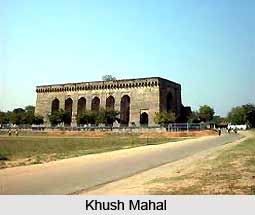 The Karan Vilas and Khush Mahal are two other palaces found lying to the west of the Tripola Gate at Udaipur. The Khush Mahal is a pleasure Palace built for European guests sometime in the mid-19th century. Found herein is an extraordinary mixture of European, Rajput and Mughal detailing. Lying to the South is the Shambhu Niwas Palace, to which the Shiv Niwas was later added. The latter is now a hotel. One room has a suite of crystal furniture. The interiors, with mosaic and mirror, tile and glass, enamel and inlaid stones, are a glorious celebration of the power and opulence of the premier Rajput dynasty. North of the Shambhu Niwas is Minto Hall, a large Durbar Hall erected in the late 19th century and named after the Viceroy, Lord Minto.
The Karan Vilas and Khush Mahal are two other palaces found lying to the west of the Tripola Gate at Udaipur. The Khush Mahal is a pleasure Palace built for European guests sometime in the mid-19th century. Found herein is an extraordinary mixture of European, Rajput and Mughal detailing. Lying to the South is the Shambhu Niwas Palace, to which the Shiv Niwas was later added. The latter is now a hotel. One room has a suite of crystal furniture. The interiors, with mosaic and mirror, tile and glass, enamel and inlaid stones, are a glorious celebration of the power and opulence of the premier Rajput dynasty. North of the Shambhu Niwas is Minto Hall, a large Durbar Hall erected in the late 19th century and named after the Viceroy, Lord Minto.
North of the Pichola Lake a canal leads to Fateh Sagar built in 1678 with an embankment added by Fateh Singh in 1889. The road along its shores is very picturesque. The former British Residency, now a Circuit House, also has lovely gardens. The island garden is called Nehru Park and has a restaurant at its centre.
West of the city Sajjangarh Hill 335 m (1,100 ft) over Fateh Sagar Lake, is crowned by the Monsoon Palace, which commands a panoramic view of the lakes and palaces of the city below.
Moti Magri, overlooking the lake, has an equestrian statue of Maharana Pratap Singh, the Rajput hero. It is a gallant site dedicated to the brave Rajput hero, Maharana Pratap. Known in Hindi as the `Smarak`, the memory was constructed with the initiative of Maharana Bhagwat Singh Mewar. The memorial consists of a life-sized bronze statue of Maharana Pratap, seated on his favourite horse Chetak.
Found at Ahar, lying two miles to the East of the city is the Royal cremation ground. There are elegant cenotaphs of the Rajahs here, interspersed among the trees. The Chatri of Rana Amar Singh I (1621) has a four-faced statue in the centre and panels of bas-reliefs of ranis who chose Sati. There is a small local museum with some excellent exhibits of 10th-century sculpture.
